– By #Pioneer Auto Show
There’s a sort of romance involved in taking on a restoration project. The idea of finding a junkyard gem, long forgotten and tossed aside, and bringing it back to life is on the top of many-a car enthusiasts bucket list. For most of us, it will stay solely on our minds and on that list, along with so many other items that will most likely never to come to fruition. But for those bold enough to follow through with that dream, the reward can be a once in a lifetime feeling.
The reason so many only dream of taking on the task of bringing back a piece of automotive history is because it takes a fairly large commitment, both financially and time-wise. Most of us are already strapped for both, and so we watch from the pits. But if you’re ready to tackle the project, we’re ready to cheer you on! To make things a little easier, here are some steps to consider taking as you get your gears turning.
- Finding the right car-and it’s parts
The first step on your journey will be to find the car. Perhaps you have a specific car in mind already, something from your childhood maybe, or something out of an old movie or show that looked so sexy on the screen (’64 Aston Martin DB5, anyone?). Or maybe you’re just out junkyard shopping, waiting for something to catch your eye. Whatever your motives, be sure of this; make sure you’ll be able to find the parts you need. Locally or online is fine, but if you won’t be able to find parts, you’re going to regret even starting. This is also a great time to have a discussion with yourself about whether or not you’re okay with replacement parts, or if you’re going all original. Depending on the make and model, finding those original parts can be tricky, and a lot of work. Worth the effort if you’re doing a high-level restoration, but if it’s just for cruising around, replacements should be fine.
- Decide what level of restoration you’re doing
How big are you trying to go? How much money are you comfortable investing into your project? How much time will you spend on this crazy undertaking? These are questions you need to ask yourself before going into the project. There’s varying levels of restoration, and it’s important to decide what level you’re going for. Let’s start with the easiest level, and move up to advanced:
Driver restoration - This is the most basic level, and can be accomplished by most anyone with the drive to make it happen. Your goal is to simply get the car back to driving condition, and not have it look like a pile of scrap that just happens to have a working engine. So, you’ll fix any minor cosmetic imperfections, maybe upgrade the paint, fix all the little interior issues, etc. You’re going for something you can drive on a semi-regular basis, and not trying to invest a fortune. This is a good start for most, and maybe in the future you’ll do another project at a larger scale.
Street show restoration - A step up from driver restoration is street show restoration. You’re going to be fixing ALL minor and major issues, cosmetically, mechanically, and aesthetically. It’s a task, but you can make it happen!
Show car restoration - This takes a much bigger commitment, and more than likely, some professional help. You’ll probably be lucky if you get this classic car out on the road once or twice a year, as it’ll mostly be shown in car shows and spend it’s time in the garage, being admired from outside the driver seat.
Concourse level restoration - This is for the big boys. Concourse level restoration is generally only achievable by those with some serious experience in classic car restoration. Cars restored to this level are not meant to be driven, and are generally only included in collections by avid enthusiasts with deep pockets.
- Safety upgrades
Depending on the make and model, your classic car may not be the safest ride on the road. It will be a good idea for you to upgrade the safety equipment if you plan on driving it frequently. It likely has no air bags, and the seatbelts may be insufficient or non-existent. Do yourself a favor, take steps to stay safe! While you’re at it, if you’re going to be using this classic for personal driving, upgrade that sound equipment as well. Do you even own any 8-tracks? Probably not, but you do have Bluetooth! Take advantage of the 21st century, and truly enjoy that ride.
- Grab a book on restoration
Books on car restoration can offer tremendous guidance on everything from engine work to common cosmetic problems, and they are 100% worth taking a look at. While you’re looking for extra guidance, join some online forums with other restoration enthusiasts. You can get a ton of free help and advice from your peers.
- Be honest about your abilities
Restoring a classic car is not a simple task. Sure, you can handle all the maintenance from your daily commute, and maybe help fix some mechanical problems for your friends, but how much can you really take on? If there are aspects of the project that are going to be outside the scope of your abilities, are there any local mechanics or professionals that will be able to help? Don’t get in over your head, plan accordingly.
- Be prepared to accept the fact that you probably won’t get rich on resale
Unless you have an extremely rare classic as your project, the car will probably be yours for years to come. Even if you do intend to sell it after restoring, most people rarely see any profit. In fact, most people report a loss upon reselling their restored classics. So don’t be swayed by thoughts of big days, as that really only happens on television and in select, very small, circles of collectors.
- Don’t sweat the small stuff
You will inevitably run into setbacks on your project. Money, time, parts availability, and many other things may become setbacks for you. The important thing is to not let them stress you out. You’re not in a race (yet), take your time and do things right. If you have to put it on hold, then do so, and come back when you’re ready. There’s a reward for having patience, one that will be worth the work that you put in. Don’t get half way there, hit a roadblock, and scrap the project. Just set it aside. There’s always next weekend.
Taking a classic car, restoring it to its once beautiful look, and driving it down the highway is a fantastic feeling. It takes hard work, dedication, and patience. There’s a lot of planning involved, and many setbacks that get in the way, but if you plan accordingly, the reward is phenomenal. When you’re all done, and ready to ride, come show us your accomplishment at Pioneer Auto Museum. We love seeing hard work pay off!
Last Modified:




